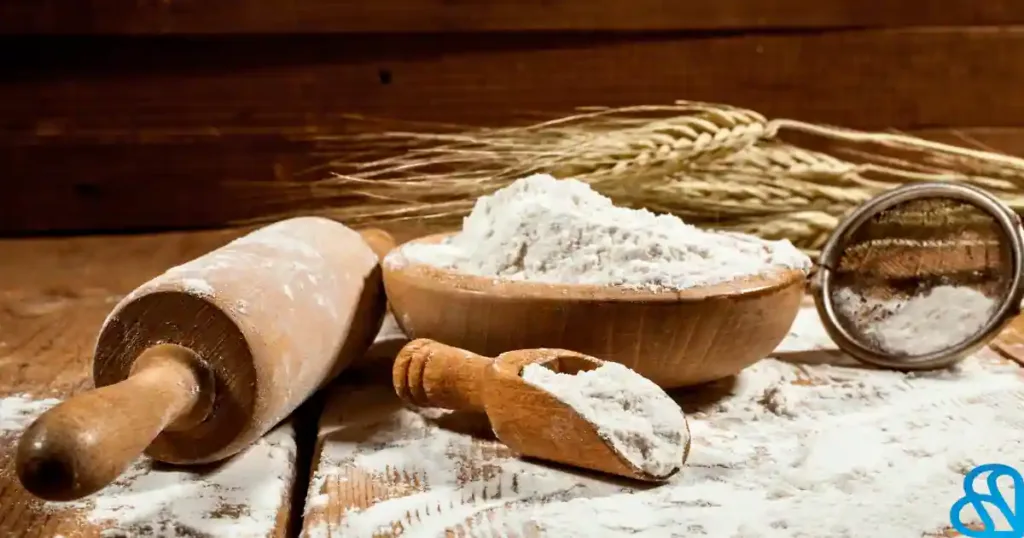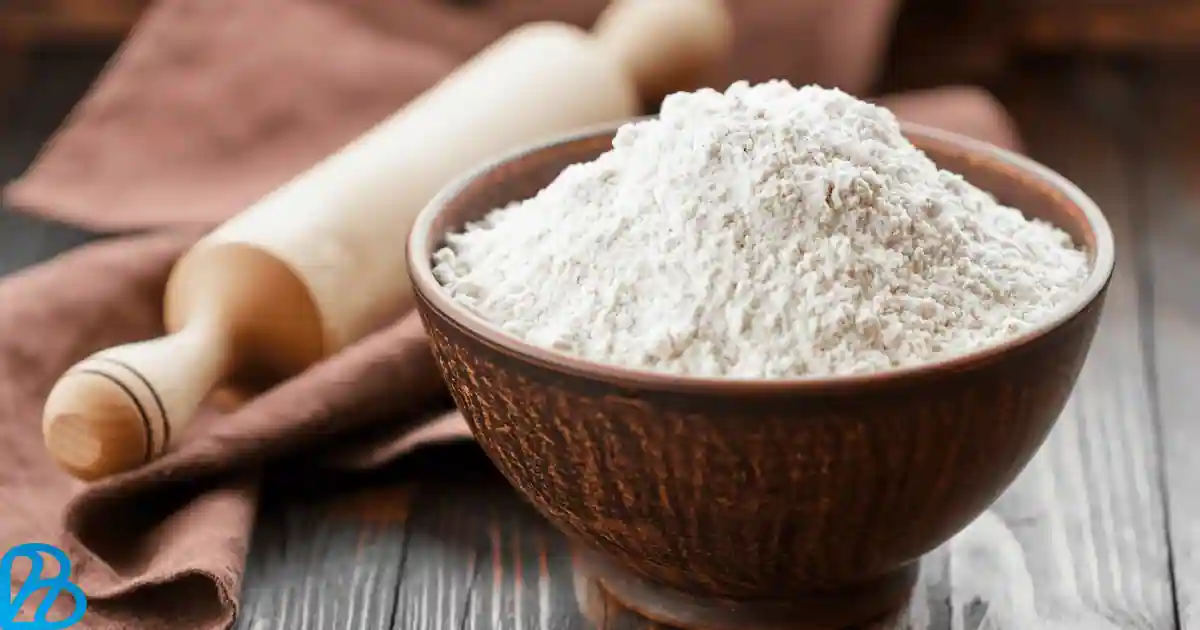Flour for Diabetics is a comprehensive guide to managing blood sugar levels, focusing on flour with low glycemic index options for health. Selecting the correct type of flour is essential for those seeking to control their diabetes through healthy eating.
This post explores multiple alternatives for traditional flours and provide a detailed guide on how to incorporate these flours into your everyday diet and baking recipes. With information on the glycemic index and recipe adjustments, you’ll be well on your way to enjoying tasty foods without compromising your health.
Importance of Choosing the Right Flour for Diabetics
Diabetes is a condition where controlling blood sugar levels is crucial. Since carbohydrates are the primary source of blood sugar, the choice of flour type can make a big difference. Some flours cause blood sugar spikes, which is harmful to diabetics, while other options offer a more controlled and gradual increase.
Understanding the Basics
Different Types of Flour and Their Impact on Diabetes
Refined flours, such as white wheat flour, are highly processed and absorbed quickly, which can raise blood sugar levels. Instead, healthier alternatives may be a better choice, as they generally have a lower glycemic index.

Glycemic Index and Glycemic Load
Glycemic Index and Load Analysis
- GI measures carbohydrate-induced blood glucose rise.
- GL Considers the amount and type of carbohydrates in food.
- Helps understand the impact on blood glucose.
Alternative Flours for Diabetics
1. Almond flour
Almond flour is rich in protein and nutritious fats and naturally low in carbohydrates. With a mild, nutty flavor, it is ideal for baking, although it requires adjustments to the liquid amounts in the recipe.
2. Coconut flour
High in fiber from food and low in carbs, coconut flour is an excellent option for people with diabetes. When absorbing a lot of water, it is essential to adjust the recipes to avoid ending up with dry dough.
3. Whole wheat flour
Unlike white wheat flour, whole wheat flour retains the entire grain, making it rich in fiber, which helps control blood glucose.
4. Oatmeal
Oatmeal has a mild flavor and is high in fiber, which contributes to steady blood sugar levels. It is highly absorbent of liquid, so that recipes may need adjustments.
5. Linseed meal
Flaxseed meal, made from ground flax seeds, is high in fiber and omega-3 fatty acids. It helps slow down digestion and, therefore, the absorption of carbohydrates into the blood.
Considerations for Baking with Diabetic Flour
It is essential to be aware that alternative flour does not behave in the same way as regular wheat flour. They may require more liquid, more fat, or an additional leavening agent. Some settings may include:
– Recipe Adjustments
You may need to adjust proportions and cooking methods to get the best results when using alternative flours. Experiment with different combinations for your favorite recipes.
– Combining Different Flours
Mixing flours can effectively maintain the flavor and texture of your usual dishes while enjoying the health benefits. For example, whole wheat and almond flour can produce delicious breads and cakes.
Tips for Incorporating Diabetic-Friendly Flours
- Substitute Flour in Different Dishes
You can use different types of flour in various recipes, from breads to sauces. Learn to substitute effectively to maintain the quality of your favorite dishes.
- Storage and Shelf Life of Alternative Flours
Diabetic flours, especially those containing healthy fats, can become rancid over time. Store them in a cool, dark place, preferably in the fridge or freezer, to increase shelf life.
How to find the best flour for people with diabetes?
Choosing the best flour for individuals with diabetes involves assessing multiple aspects of dietary needs, including the flour’s glycemic index, nutrient density, and overall impact on health. Choosing a low glycemic index flour will help you avoid increased blood sugar. Here’s a quick guide to aid in this decision:
– Check the Glycemic Index
Select flours that have a low glycemic index, such as almond, coconut, oat, and chickpea flours, to minimize blood sugar elevation.
– Evaluate Nutritional Content
Give preference to flours that offer additional health benefits, like higher protein, fiber, and healthy fats.
– Consider Personal Dietary Needs
Account for personal health goals or dietary restrictions, such as gluten intolerance or carbohydrate limits.
– Flavor Matters
Think about the flavor profile of the flour and how it will blend with the intended recipes.
– Experiment in the Kitchen
Don’t be afraid to experiment with different flours and substitutions to find what works best for your diet and palate.
You should consult a dietician or medical professional before making significant dietary changes.
Replacing Wheat Flour with Low-GI Options
- Wheat flour replaced with healthier low-glycemic index (GI) options improves blood glucose regulation.
- Almond, coconut, oat, and chickpea flours cause a slower rise in blood sugar, aiding glucose control.
- Consumption of low GI flours aids in weight management and a more prolonged feeling of fullness.
- Increased fiber and healthy fats promote digestive health and cardiovascular health.
- Nutritious flours can manage existing conditions and prevent overall health.

Sample Recipes and Cooking Tips
To help you get started, consider the following tips:
- For baking, combine diabetic-friendly flours with a small amount of wheat gluten or potato starch to mimic the effects of gluten and improve texture.
- Adjust liquid and eggs in recipes to accommodate different flours’ absorbency and binding properties.
- Be cautious of the flavor qualities of alternate flour and choose recipes that complement them.
Conclusion- Flour for Diabetics
Choosing healthy flours can be a valuable component in diabetes management. Examining how different flours influence your blood sugar levels and how adjusting recipes can provide a healthy and varied diet. Dare to explore alternative flours and discover new flavors and textures in your kitchen!
Hi there! I’m content writer and blogger. With over two years of experience, I’ve shared my passion for writing across various platforms. I firmly believe in the transformative power of words and look forward to sharing this journey with you. Enjoy my work!










